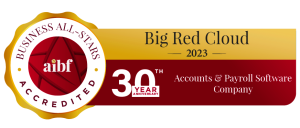Pandemic prompts AP automation
The disruption caused by coronavirus has boosted interest in accounts payable automation solutions.
Industry research consistently highlights the complexity of business processes relating to B2B payments and the difficulties faced by smaller business in particular in handling high volumes of invoices manually. These difficulties have increased since the start of the pandemic as many finance staff have been forced to work from home.
As a recent guide to digitising payments states, digital AP tools let businesses operate remotely with ease as teams break their dependence on on-site processes and shift to the cloud.
Driving down ‘hidden’ payment costs
An obvious benefit of AP automation is reduced payment costs. Companies that have automated their account payable processes make a higher percentage of their payments electronically, speeding up receipt of payment while reducing bank charges associated with manual transactions.
This is particularly important as many companies significantly underestimate what they spend on manually processing and paying invoices, failing to recognise the full cost of invoice preparation as well as the cost of mistakes and duplicate payments as a result of human error.
Automation not only improves the flow of payments in from customers and out to suppliers. It also helps businesses streamline refunds payments to customers or payments to staff for expenses.
Streamlined record-keeping
Paper invoices have to be physically stored – which is an inefficient use of costly office space and not very environmentally friendly – while issuing paper invoices consumes even more materials and adds postage costs. Automating the process can also help companies avoid the risk of late payment fees by reducing delays in manual approvals.
As with other forms of business process automation, digitising accounts payable releases staff from tedious jobs such as manual data entry, allowing them to focus on more valuable tasks such as analysing average customer spend. For businesses that have had to reduce their headcount it enables them to do more with less.
An automated AP process also captures all data related to business expenditure, giving the business complete visibility of how it spends its money.
What features do you need?
It is worth looking for an AP solution provider that understands the nuances of the industry you operate in and how to integrate into the other financial systems that support your business. Flexible solutions are preferable, especially if you are only looking to automate the invoicing processes rather than embark on a major digital transformation project.
Businesses that have used manual processes will most likely be unaware of how to extract the data generated by their accounts payable processes. A proactive vendor should be able to help you use this data to not only measure your own performance but to put it in context by benchmarking against your competitors.
Accounts payable automation enables businesses to track payments made and received more accurately. When combined with the insights available from a cloud-based accounting solution such as Big Red Cloud, this creates a powerful tool for monitoring cash flow positions and creating accurate financial reports.





